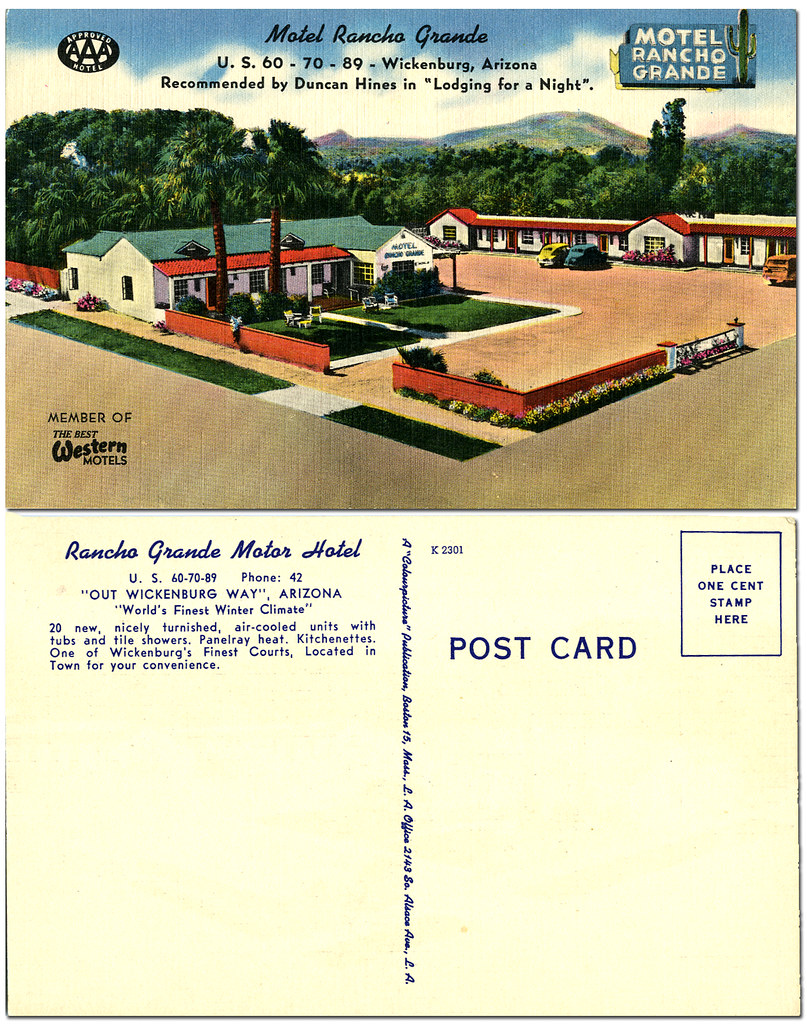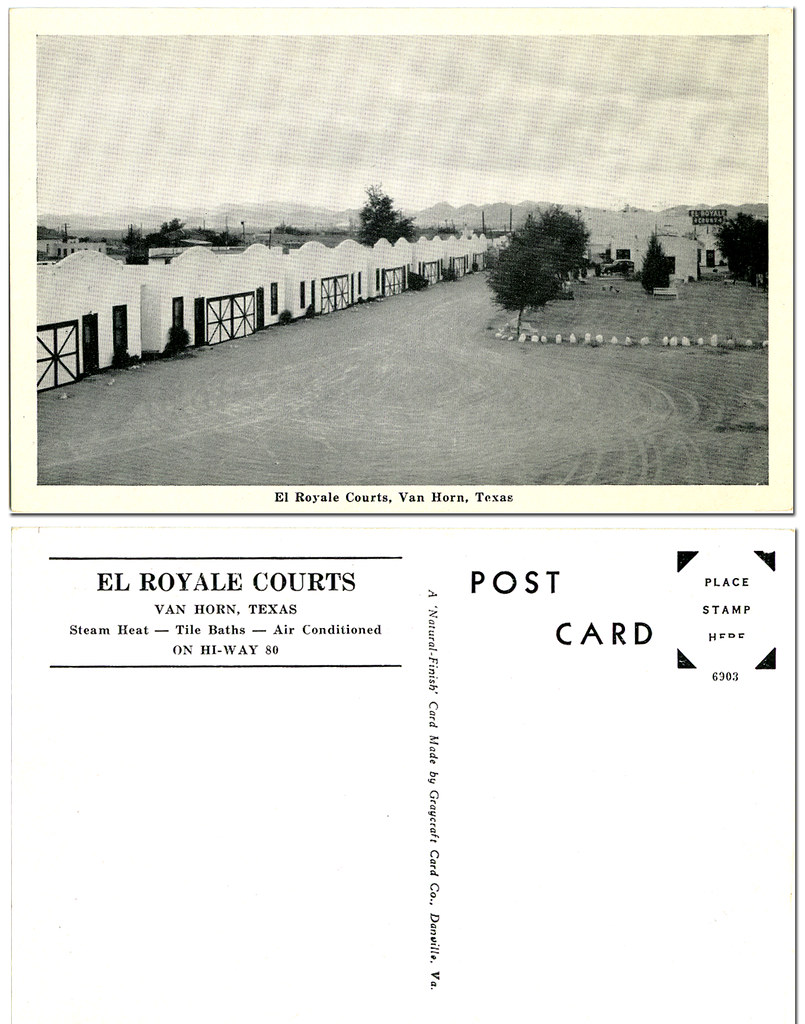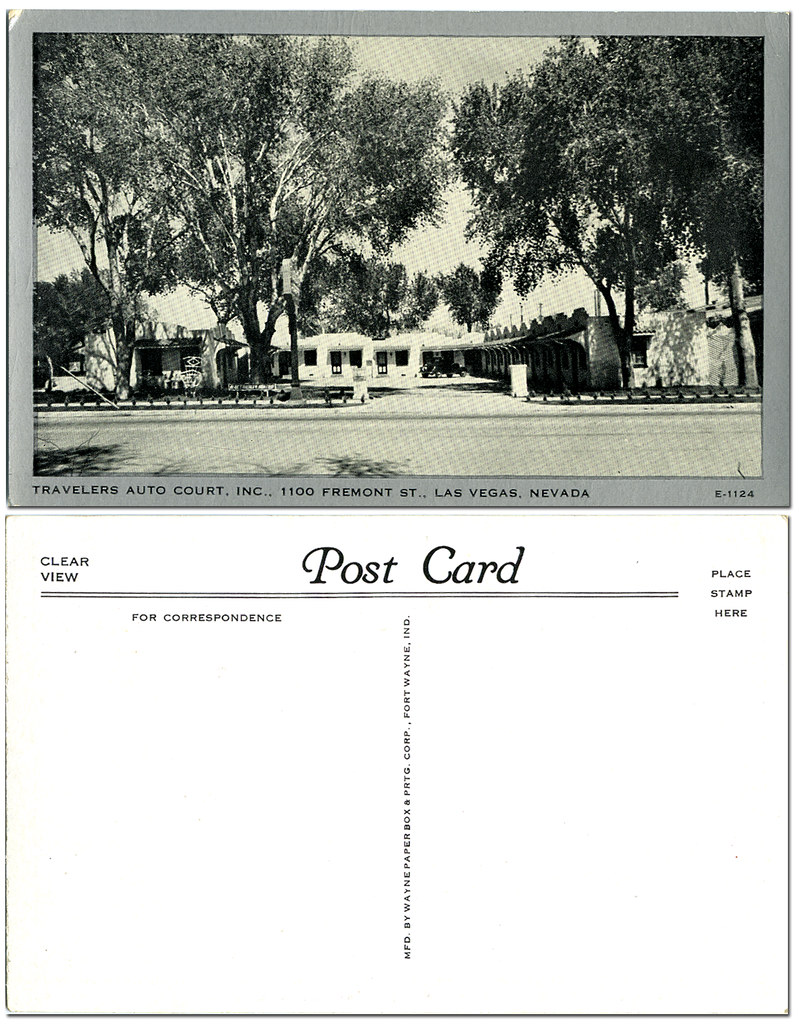Here we are on the Grapevine along Route 5 heading to Los Angeles. I don't remember what year I stayed at the Caravan Motor Inn, nor do I remember why. It was either the late '60s or early 70s.


Click on images to see them larger.
This place still physically exists, at least according to Google Earth, but I don't know what it's now called.

I'm always fascinated by motel cards that are architectural drawings. They've always seemed a little less inviting than a photo. What's fascinating about this card is the little piece of information about the architect.
Homer A. Rissman, a longtime Las Vegas architect, made a unique contribution to the Strip skyline when he designed the tent-shaped Circus Circus.The firm no longer exists.
In addition to the Circus Circus, Rissman designed a number of other local properties, such as the Dunes Country Club, the Hacienda on the south end of the Strip and the Bonanza, which had been on the Bally's site.
His work also includes the Flamingo Las Vegas towers and the Primm hotels Buffalo Bill's, Whiskey Pete's and the Primadonna, said Nevada Moore, who had worked for Rissman the past 11 years.
"He was one of the nicest men I ever knew," Moore said.
Rissman died Wednesday (October 2001). He was 74.
Born Feb. 22, 1927 in Chicago, Rissman, who came to Las Vegas in 1956 to design the Hacienda, started his career by building simple, inexpensive houses in Illinois.
In 1954 he moved to California and initially came to prominence building restaurants and motels along the developing interstate highway system.
It was such work that brought Rissman to Las Vegas, where he would become known for his imaginative building design concepts, including Circus Circus, which he co-developed with gaming pioneer Jay Sarno, and the riverboat-shaped Holiday Casino, now Harrah's.
One of Rissman's early jobs was a major renovation of the Flamingo Hilton, where he painstakingly worked around historic architecture dating back to when mobster Bugsy Siegel built the resort.
In the process, Rissman replaced most of the buildings -- which had been built with cheap materials -- with sturdy and useful structures. Still, he saved Siegel's suite, complete with trap doors for quick escapes, as well as other early VIP suites.
In a later renovation, by another architect, those efforts were destroyed as the resort underwent major changes as operators attempted to distance themselves from the property's organized crime roots.
Away from the Strip, Rissman designed luxury apartment complexes, including the Regency Tower, where he lived for many years.
In his spare time, Rissman and his wife, Alice, who survives him, visited Nevada ghost towns and helped preserve them for their historic significance. (SOURCE: University of Nevada, Las Vegas)
























